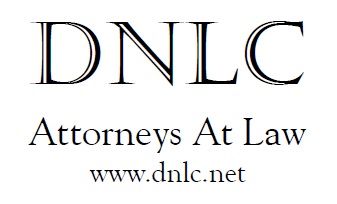Unique Use of Inverse Condemnation Results in Settlement of Merced Action for More than Twice the Amount of the Government’s Initial Offer
The government does not always approach the eminent domain process in a manner that seems fair to landowners. The problem with government is not that it intends to injure, but that sometimes it becomes so absorbed in its own needs that it forgets those of landowners. Although the deck may often feel stacked in the government’s favor, landowners can benefit significantly from a careful assessment of the unique circumstances of their cases by counsel familiar enough with the ins and outs of our eminent domain laws to find creative avenues to maximize recovery. A recently settled DNLC inverse condemnation action in Merced proves this point.
In late 2013, DNLC assisted landowners in Merced in achieving a very favorable settlement in a case in which nearly a million dollars would have been left on the table had the landowners accepted the government’s offer. The case involved a taking by the County of Merced of a portion of several agricultural and residentially zoned parcels, along with two temporary construction easements, to construct and operate a public project known as the Campus Parkway Project. The project is planned to involve the construction of a 4-lane limited access expressway on the east side of the City of Merced, extending from Coffee Street to Yosemite Avenue, connecting State Route 99 with Yosemite Avenue and Lake Road. However, construction has never commenced, nor were plans even completed, for the second or third phases of the project for which funding appears to remain unavailable.
The County had issued a public “Notice of Intent” to conduct environmental review for the project way back on November 29, 2000. A Final Environmental Impact Report (EIR) was approved by the County’s Board of Supervisors in June of 2005, and from that time forward, it was public knowledge that the alignment of the project would impact our clients’ property. However, rather than move promptly to try to purchase the property, the County waited until May 21, 2009 – nearly four years later – to make an initial offer.
Amid ongoing negotiations, on February 23, 2010, the Board of Supervisors adopted a Resolution of Necessity, which authorized the County to take the property by filing an eminent domain action. Thereafter, negotiations stalled, and nearly a year and a half passed after the Resolution’s adoption with no action by the County to proceed with filing an action. At this point, after waiting more than a decade for the County bring the matter to a head, the landowners sought DNLC’s counsel, and availed themselves of a rarely utilized procedural statute that allowed them to file their own suit, in inverse condemnation, based on the County’s failure to file a direct condemnation action within six months after adopting its Resolution, pursuant to California Code of Civil Procedure section 1245.260.
Section 1245.260 provides landowners the option of forcing a taking by way of an inverse condemnation action any time the government fails to file suit within six months of adopting a resolution of necessity. Exercising this option to file an inverse condemnation action allows a landowner to speed up resolution of a case if pre-litigation negotiations have proven unsuccessful and the government does not move swiftly to bring the matter to the judicial arena. Further, it changes a critical dynamic between the landowner and the government. In a direct condemnation action, a landowner is not entitled to recover litigation expenses (i.e. attorney and expert witness fees) as a matter of right, but a landowner awarded compensation in an inverse condemnation action is entitled to be reimbursed all “reasonable costs, disbursements, and expenses, including reasonable attorney, appraisal, and engineering fees” pursuant to Code of Civil Procedure section 1036.
In the Merced action, the County’s appraiser had concluded the landowners were entitled to total just compensation of only $829,200 for all of the property taken and damages caused to the remainder. But with the leverage the landowners achieved by bringing an inverse condemnation action, DNLC was able to negotiate a settlement in the amount of $1,675,000. Because DNLC was aware of the seldom used code section, the landowners were able to evaluate their options thoroughly. Based on their informed refusal to accept an inadequate government offer, they received total just compensation in an amount that was $845,000 more than what Merced County was willing to pay prior to initiation of the inverse condemnation action. In other words, the unique use of inverse condemnation yielded the landowners recovery of more than twice the initial offer.

